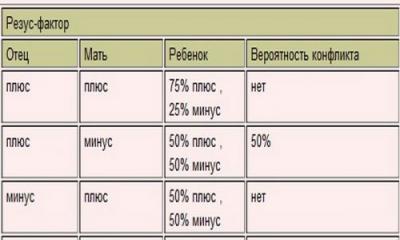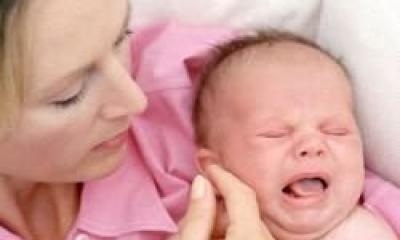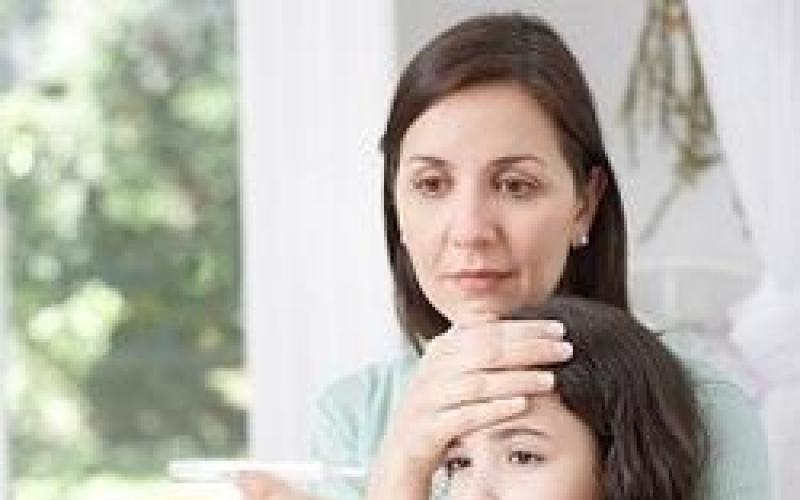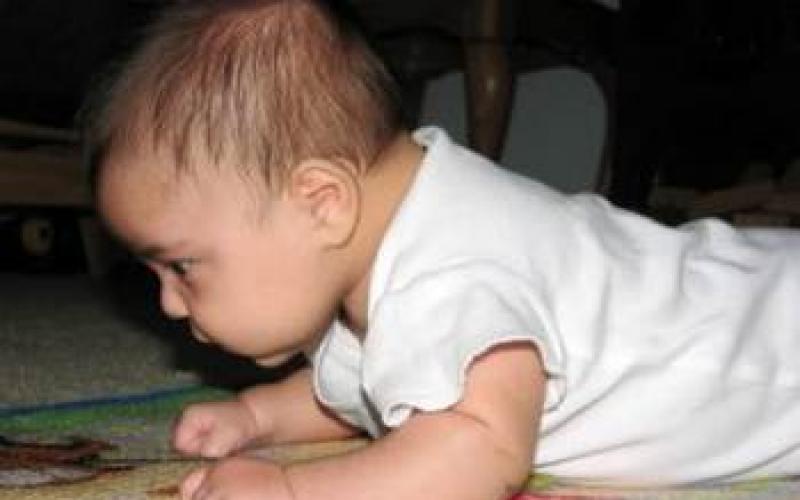Any person has their own algorithm of action if their temperature rises. The most common medicines to reduce it are always at hand in the first aid kit. But what about a nursing mother, because many medicines are simply unacceptable to use during breastfeeding, as they can cause serious harm to the little man?
At what thermometer reading should you start worrying?
If the mercury column of a conventional or digital reading of an electronic thermometer stops at 37.6 ° C, then this is a reason to see a doctor. After all, such a temperature can be a symptom of a serious illness, and the doctor will make the correct diagnosis and promptly prescribe adequate treatment (see "").
Does the lactation process affect the temperature?
Usually we measure the temperature in the armpit, and if we do this when the mammary gland is full or during and after feeding (expressing), then the thermometer reading will surprise you a little: the temperature will be 37.0- 37.4 ° C... This phenomenon is explained by the fact that this increase is caused by the temperature of milk, which is formed deep in the tissues, and has a temperature much higher than 37 degrees. In addition, in the process of extracting milk from the breast, the ducts contract, which also generate heat. In order for the thermometer to be relatively truthful, the temperature in this case should be measured about half an hour after feeding.
Reasons for fever when breastfeeding
Usually, as soon as the temperature rises, we immediately assume that we have a cold, although in fact there are many more such reasons, and they depend on many factors. Therefore, a doctor's consultation is very important and even extremely necessary, since only he can correctly make an accurate diagnosis.
Inflammatory diseases
An increase in temperature within three days immediately after childbirth, especially if they were accompanied by surgery or complications, signals the presence of postpartum inflammatory diseases:
- mastitis;
- endometritis;
- suture inflammation after episiotomy or cesarean section.
During this period, an exacerbation of chronic infections is possible - herpes, pyelonephritis and others.
Lactational mastitis
Another inflammatory disease that can also be accompanied by a significant increase in temperature is lactational mastitis, which also appears in the first days after childbirth (See ""). It is a serious inflammation of the mammary gland caused by bacteria. The problem can arise even in the hospital, but most often it falls on a young mother almost immediately after returning home. Quite often, the causative agent of lactational mastitis is the well-known Staphylococcus aureus.
The likelihood of mastitis is significantly increased by:
- lactostasis;
- anatomical anomalies in the development of the nipples;
- injuries and cracks;
- cicatricial postoperative changes in breast tissue;
- endocrine diseases;
- foci of purulent infection on the skin of the mammary glands;
- gross violations of the basic rules of hygiene and pumping.
Colds
An increase in temperature three to four weeks after childbirth is mostly due to illness with common colds or due to food poisoning.
What should mom do if she has a fever?
If the thermometer has exceeded the mark 37.6 ° C:
- See a doctor - in the postpartum period (6 weeks after childbirth), you can safely go to the doctor who took delivery.
- Call a therapist if you have cold symptoms - runny nose, cough, redness of the throat, swelling, and if there are signs of food poisoning - vomiting, diarrhea.
- A urologist will help if you are concerned about pain in the lower back, in the bladder area and painful urination.
- If the temperature rises above 38.5 ° C, and the reason for this is unknown, and the doctor will not be able to come in the near future, then to reduce the fever, you can safely take those drugs that are usually given to young children in this case - Nurofen, Efferalgan... But the dosage should be for an adult.
Is it possible to breastfeed my baby at high temperatures?
This fully depends on the very reason that caused such a reaction of the body. Actually, therefore, a doctor's consultation is vital, because a serious drug may be needed for treatment, which is simply incompatible with breastfeeding or it cannot be continued due to a serious infectious or viral illness of the mother.
But, as a rule, in most cases, all problems can be solved, and you will not have to end breastfeeding early. Sometimes the total amount of milk produced by the mother may decrease significantly, but this is due to the weakening of the body, and not due to the high temperature.
Does milk quality change at temperature?
The high temperature itself does not affect the quality of milk in any way, so in case of colds in the mother, on the contrary, it is recommended to feed the baby - after all, with mother's milk, he receives protective antibodies that protect him from illness. But in some cases with mastitis, especially if it is purulent, feeding the affected breast will have to be stopped until the latter is fully recovered. Much depends on the doctor who chooses the treatment regimen, as well as on the form and severity of the disease itself.
Sometimes you can hear completely ridiculous recommendations that you cannot breastfeed a baby during the mother's illness, but you need to express milk, then boil it and only then give it to the baby. These recommendations are given by absolutely narrow-minded people, and to carry them out is the height of absurdity! Boil breast milk - means to kill all its useful properties!
Let's sum up
Most importantly, a nursing mother must be treated! There are a lot of drugs that are compatible with breastfeeding, as well as a whole arsenal of traditional medicines that will help you quickly and completely harmlessly restore health. The disease cannot be carried on your feet, because your excellent health is important not only for you alone, but also for your little beloved man!
The long weeks of gestation are over, and it's a wonderful time for the baby to get to know the world around him. So far, the little man sleeps almost all the time, and when he wakes up, he asks for his mother's breast full of milk. A healthy and happy parent feeds her baby quite often - up to 6-7 times a day.
However, there are often situations when a woman's temperature suddenly rises, and a natural question arises before her - will breastfeeding in such a state harm the child's health? Let's try to figure it out.
Can I breastfeed at a temperature?
Any person sooner or later encounters diseases in which the temperature rises. The majority knocks down excess degrees with the help of pharmacy drugs, not really thinking about the consequences, and only a few go to the doctor for adequate treatment. When the temperature rises in a nursing mother, there is simply no place for negligence here. After all, such a woman is inextricably linked with her still helpless child, which means that self-medication or ignoring the problem can undermine his precarious health.
There are a lot of reasons for the condition in which the thermometer shows high numbers. Perhaps you shouldn't worry, or maybe quite the opposite. The best solution for fever is to seek medical attention. After examining the mother, the doctor will make an accurate diagnosis, calm her down or prescribe the necessary treatment. In any case, one should not refuse a visit to a doctor, however, as well as from feeding a child during this period.
The fact is that if an increase in temperature is caused by any infection, the baby, along with the mother's milk, will receive the substances he needs to form immunity. If you suddenly stop breastfeeding, you can not only deprive him of additional protection, but also put yourself at risk of developing mastitis by stopping the emptying of the breast. In addition, a break in natural feeding can lead to a complete refusal of the child from it in the future.
Hello. In the morning I have a temperature of 38.5 ° C. A seal is felt in the breast, the breast itself aches a little. On the other hand, everything is fine. (Anna, 30 years old).
Hello Anna. From your description, the rise in temperature may be caused by milk stagnation. I would recommend that you observe your condition for 1 more day. To make sure that the "culprit" of extra degrees is the chest - measure the temperature in the groin area or in the elbow bend. You can put on a candle of paracetamol. If the temperature does not drop, contact the maternity hospital where you gave birth to your baby. You may need pumping to eliminate lactostasis.
It should be borne in mind that temperatures up to 37.1 ° C in women during lactation are completely normal. This change is directly related to the arrival of milk, and therefore you should not be scared when you see unusual numbers on the thermometer. During the feeding process, the thermometer readings can normally reach 37.4 ° C.
How to measure your temperature correctly while breastfeeding
Since the body temperature is increased during feeding, in order to obtain the most reliable results, it is best to measure it half an hour or an hour after it, at rest.
For lactation, forget about the only way to measure body temperature - in the armpit. From now on, the degrees reflected on the thermometer after it is removed from this zone will not be entirely informative.
The temperature in the elbow and groin area does not depend on the lactating breast, and therefore, such indicators will more truthfully reflect the general condition of the mother. It is necessary to carry out a simple procedure in the same way as in any other way: place a clean dry thermometer in the bend of the elbow or in the groin fold, wait 7-8 minutes.
If there is a difference in temperatures when measured in the armpit and at the bend of the elbow (or in the groin) in favor of the first method, then the heat is coming from the chest, and there is no need to worry if the numbers are slightly above 37 ° C.
Good afternoon, help me please, I am very worried. She gave birth not so long ago, just 5 days ago. Since then, my temperature has fluctuated between 37.1 ° C and 37.5 ° C. I feel normal, the child also eats well. Tell me, is this normal, or should I see a doctor? (Zina, 25 years old)
Good afternoon, Zinaida. A slightly elevated temperature is completely normal phenomenon for you. This change occurs during breastfeeding due to the influx of milk. No need to be nervous and run for help. You can start worrying if the thermometer shows numbers above 38.5 ° C.
Possible reasons for an increase in temperature while breastfeeding:
- Engorgement of the mammary glands. In this case, there is no need to worry, the increase in temperature is associated with the arrival of milk (the maximum rate is 37.6 ° C). If there are no complications, the temperature goes down on its own, and you can wait a little with a trip to the doctor. You can start worrying if the lumps in the chest do not want to go away, and the fever lasts for a long time. This may be due to milk stagnation (lactostasis), and to resolve this problem, you need to properly express the accumulated fluid.
- Mastitis. Quite a frequent occurrence in postpartum women, caused by an infection that has entered the body. Typically, pathogenic microbes enter the breasts through small cracks in the nipple area. The main symptoms of mastitis: high fever (39 ° C and above), chest pains, chills, palpable lumps in the mammary gland. If you have these symptoms, you cannot hesitate, you need to see a specialist as soon as possible.
- Allergic reaction. In the first days after childbirth, the newly-made mom is more sensitive, and therefore an allergy to some foods, drugs and even smells is quite expected. If the temperature does not exceed 37.5 ° C, and there are no manifestations of allergies on the body (stains, scratches, etc.), you can observe your health on your own. After a couple of days, the body should adapt.
- Bacterial damage to the nasopharynx and oropharynx (sinusitis, tonsillitis, tonsillitis). The best solution in this situation is not to self-medicate, but to call a local therapist for examination.
- Discrepancy or inflammation of the seams. The stitches remain after a caesarean section, as well as after a perineotomy or episitomy performed. The reason for the increase in temperature in the overwhelming percentage of cases is the first option. If you notice redness, thickening or infiltration on the skin at the junction of the seams, immediately contact the maternity hospital in which you gave birth at any time of the day.
- Food toxicoinfection.
- Exacerbation of chronic diseases. After childbirth, the mother's body is still weak after the stress experienced, and therefore there are frequent cases of deterioration of health. Usually, the mother herself knows about her chronic diseases, as well as their symptoms. You should not tolerate or be treated with what you are used to, many drugs penetrate the baby through breast milk and are very harmful to him.
- Postpartum depression. As everyone with babies knows, the postpartum period is full of surprises, stress, and sleepless nights. Such a regime is very difficult for a young mother, and therefore often, against the background of constant excitement, her temperature may rise. The treatment for this ailment is simple - to avoid unnecessary anxiety, give yourself a rest and at least occasionally leave the baby for a couple of hours with close relatives.
As you can see, there can be many reasons for an increase in temperature, and not all of them are directly related to the state of the mammary glands.

How to bring down the temperature while breastfeeding?
For lactating women, access to many drugs is closed, because most seemingly harmless drugs tend to penetrate into breast milk. As a result, the child and his mother receive "treatment", which can cause many side effects in a small body, unpleasant or even dangerous to his life.
For women in labor who are breastfeeding, it is undesirable to bring down the temperature until it reaches 38.5 ° C, because at this time the production of its own interferon and an active fight against infection. When feeding, the baby also receives useful substances to strengthen the immune system. However, doing nothing at a temperature is also not the best solution - you need to lie more, drink warm water, make sure that it is not too hot in the room, refrain from swimming for a while.
The best home remedy for self-administration is paracetamol. It is harmless to the baby and allowed for postpartum women. It is advisable to take the drug in the form of suppositories, so it will definitely not get into breast milk.
Aspirin, familiar to everyone, is very dangerous for young children. The main component of the drug suppresses the production of thromboxane A2, which causes blood thinning. When taking aspirin, acetylsalicylic acid invariably enters the baby's body, causing many terrible consequences: a decrease in hemoglobin production, impaired functioning of the hearing organs, liver, kidneys, and brain.
Although Ibuprofen is approved for use during lactation, it is still best to start taking it, after consulting your doctor to clarify the correct dosage.

After taking the medicine, in order to protect the baby, it is better to take breaks in feeding at 3-4 hours.
And yet, it is better not to self-medicate. The best solution is to call a qualified doctor who can correctly assess the condition of the postpartum woman and prescribe safe treatment for her.
How often do you see your gynecologist (not during pregnancy)?
Please choose 1 correct answer
Once a year
Overall score
Semiannually
After childbirth, the female body is weakened and prone to various diseases. Mom may catch a cold, and then she will have to use medications for treatment. How to be in such a situation? Is it possible at a temperature? Or is it worth stopping breastfeeding for a while?
Causes of maternal illness
There are various factors that can affect the health of a nursing mother. A woman can become ill for several reasons: an exacerbation of a chronic illness, the appearance of an acute bacterial infection, or an acute viral infection. In any case, the mother will be worried about the question: "Is it possible to feed the child at a temperature?" Everything will depend on what caused the disease. Cessation of breastfeeding may be due to the fact that the causative agent of the disease can penetrate into breast milk and be transmitted during feeding to the baby. In addition, during treatment, a woman may have to take medications that are contraindicated in infants.
At temperature or not?
A sick mother who feels bad, of course, does not want her baby to become infected. But, contrary to the opinion of "knowledgeable" people who advise to boil breast milk or stop feeding altogether, it is not necessary to stop breastfeeding.

After all, when a mother is sick, her child is especially in need of nourishing mother's milk. In addition, stopping feeding can provoke an even greater increase in temperature. Through breastfeeding, the mother provides her child with protection from viral diseases, since antibodies are produced with him.
At temperature: milk or mixture?
If the mother decides to temporarily stop breastfeeding, she will need to express milk about six times a day, otherwise breast stagnation may occur, which will lead to an even greater rise in temperature and the development of mastitis. Can I feed my baby with expressed milk? Of course yes. But no devices and breast pumps will empty the breast as well as a baby does. If a woman still continues to worry about the question of whether it is possible to feed a child at a temperature, then it should be noted that no changes occur in breast milk at high temperature indicators, its properties do not change in any way: it does not sour, does not curl up and does not changes the taste.

It should also be noted that boiling milk destroys many nutrients.
Is it possible to feed a child at a temperature and what to do to overcome it?
To reduce the high temperature, paracetamol may be used, but aspirin should never be used. You can use medicines only if the nursing mother does not tolerate high temperatures. For treatment, symptomatic treatment is carried out using inhalers, remedies for the common cold, solutions for rinsing the throat. All these activities are permissible for breastfeeding... In addition, to date, a fairly large number of medicines have been released that are allowed to be used by a nursing mother. The right choice of medications for a woman will be helped by her attending physician.
Breastfeeding for a baby is undeniably much better than artificial breastfeeding. However, it happens that a young mother doubts whether it is possible to give the baby a breast? Is it safe? It is about a situation where breastfeeding mom rises temperature. Can whether to continue breastfeeding and how to treat? "Mom's cheat sheet" will prompt.
Situation number 1: I am breastfeeding, the temperature has risen 37-38. What to do?
The first thing to do for a mother who is breastfeeding a baby is to find out the reason elevated temperature... Do not hesitate to call your doctor at home. Modern mothers are used to looking for information on the Internet. Well, while the ambulance is on its way, let's try together to determine what's wrong with you. So, temperature 37-38 in a nursing mother may occur for the following reasons:
1. A nursing mother got sick with a cold or SARS ... The most common reason why the temperature rises is up to 37-38 degrees (and even higher). And here it is curious to know such a feature female body: Together with milk, the baby will receive antibodies produced by her mother's immune system, as well as nutrients that will help the baby overcome a cold disease. That is, it is possible and even necessary to breastfeed a child for colds and SARS, experts say.
How to treat yourself and protect the child from the disease?
Antiviral antibodies in the human body are produced on the 5th day of illness. That is, the body is able to cope with this disease itself. Mom's task:
- eat according to your appetite,
- drink a lot,
- often ventilate the room (in clean, cool, humid air, viral particles lose their activity),
- irrigate the nasal mucosa with saline solutions.
And in order to protect the child from infection with the virus, they recommend:
- breastfeeding with a mask,
- regularly irrigate the baby's nasal mucosa with saline solutions or drops (they are now produced even for babies marked 0+),
- ventilate the room and carry out wet cleaning of the room (viruses, as you know, love dust).
- do not stop breastfeeding, so that, together with milk, the baby gets immunity to mother's disease.
Antiviral and antibacterial drugs are not permitted with breastfeeding. If the mother does not accept them, you can continue to feed the baby. Then the mother's milk, in which antibodies to viral infections are produced, will protect the baby. If the mother is using drugs that are contraindicated for breastfeeding, you should stop breastfeeding and switch to a mixture at the time of taking. The transition must be very careful not to cause allergic and other adverse reactions and the baby.
If at the time of illness you transfer the baby to artificial feeding, this can badly affect the condition of the mother. If breast milk is not sucked off by the baby, mastitis may begin in the young mother, or the milk will slowly disappear. A baby who receives formula from a bottle may not want to breastfeed again later. In this case, if the mother has breast milk, the baby will have to be transferred to an artificial mixture.
Thus, if the mother has a fever due to a cold, then she can breastfeed the baby.
2. Lactostasis (milk stagnation), mastitis - the second most common reason why the temperature of the nursing mother has risen. Is it possiblein this situation continue breastfeed?
 Even if the baby is breastfeeding well, often too much milk can be produced at the beginning of lactation. Red spots appear on the breast, milk flows poorly from the breast, it becomes crowded and hard, like a stone. At the same time, the body temperature often rises to 37 - 38 degrees. Milk collects in the lactation canals, crushes, there is a blockage, stagnation.
Even if the baby is breastfeeding well, often too much milk can be produced at the beginning of lactation. Red spots appear on the breast, milk flows poorly from the breast, it becomes crowded and hard, like a stone. At the same time, the body temperature often rises to 37 - 38 degrees. Milk collects in the lactation canals, crushes, there is a blockage, stagnation.
It is very important to frequently apply the baby to the breast so that there is no stagnation. And if stagnation has formed and all the signs are present, it is necessary to feed more often than usual, about once 1 - 2 hours. At the same time, the position from under the armpit is ideal, when the baby massages the side of the breast where stagnation occurs most often. Such a baby will help mom recover.
In between feedings, it is useful to apply a chilled white cabbage leaf to the breast. It's old and effective method relieve swelling and inflammation in the chest. The sheet is torn off and lightly beaten with a kitchen hammer and inserted into the bra. After 1.5 - 2 hours, the leaf is removed before feeding. Read more in the article.
An increase in temperature during lactostasis, mothers are often mistaken for ARVI or influenza, they delay to see a doctor, which only aggravates the situation.
Meanwhile, if the stagnation persists, the redness and temperature do not subside, this can lead to mastitis. And this is a more serious and painful problem. In fact, mastitis is a neglected lactostasis (milk stagnation). That is why it is so important to consult a doctor at the first signs of milk stagnation. In advanced cases, the doctor will prescribe the necessary antibiotics that are safe for the baby and are compatible with breastfeeding.
A simple and safe paratsatemol during breastfeeding will help against pain and temperature. Experts believe that the composition of milk remains the same after taking it.
So, with stagnant milk, you can breastfeed your baby, since the milk ducts must be emptied regularly. But this is possible only if there is no purulent discharge from the chest. After feeding, the remaining milk must be expressed.
3. Stress, periods. Sometimes it happens that a young mother's temperature rises against the background of a stressful situation or against the background of menstruation. In this case, you can also continue to feed the breastfeeding infant with breast milk. But if the mother's temperature rises above 39 degrees Celsius, then it must be brought down. After all, mother's milk "burns out" at a high temperature in the mother, and the baby refuses it. Medicines are transferred to the baby along with the mother's milk, therefore, antipyretic drugs containing aspirin cannot be taken by the mother - babies cannot take aspirin. To reduce the temperature, a nursing mother should use only paracetamol-based medications.
4. Herpes. On the lip, for example. What to do? Try not to touch the child with this place, wash your hands more often, protect the baby from contact with the focus of the disease.
Situation number 2: nursing mother is seriously ill, temperature. Can antibiotics be taken?
1. The cause of the temperature can be diseases for the treatment of which it is necessary to take antibiotics... Such diseases pose a danger to both the mother and the child. The attending physician, if the disease has just begun or its course is mild enough, may prescribe antibiotics to the mother, which will not interfere with the breastfeeding process. In modern medicine, there are a number of antibiotics that are safe for breastfeeding. Only the attending physician has the right to prescribe them. Some types of anesthesia are also compatible with breastfeeding. In any particular case, whether the mother can continue to breastfeed if the temperature has risen and any serious illness is detected, the doctor must decide.
2. Mom is seriously ill and cannot breastfeed the baby for some time. What to do in this case? If mom is in the hospital or is undergoing chemotherapy, you need to wait until the course ends. It is important to express milk regularly to prevent milk waste and stagnation. Then it will not disappear and later it will be possible to return to feeding.
There are situations when a nursing mother needs special treatment that is incompatible with breastfeeding. The doctor prescribes medication and recommends switching to artificial feeding. You shouldn't feel like a criminal. The child needs a healthy mother, so it is better to follow the recommendations of the attending physician. Children grow up on mixtures, the main thing is that a healthy and joyful mother is there)
The temperature of a nursing mother can be for several reasons, finding out them, it is necessary to urgently take action. If a woman gave birth recently, perhaps this is an individual reaction to the formation of lactation, in these cases, subfebrile values \u200b\u200bare observed that do not exceed 37 degrees. You should never forget about the dangerous mastitis or various infectious processes in the body. Before knocking down a high body temperature on your own, it is imperative to contact a competent specialist who will find out the main reasons and prescribe a competent treatment. And every mother should remember that even at 39 degrees, you can not stop breastfeeding.
Let's take a closer look at what can affect a woman's temperature increase with breastfeeding, and what measures can be taken in specific cases, what medications are allowed to drink, and how to correctly measure the temperature during lactation?
Checking the temperature correctly
If a woman is breastfeeding a child, then when measuring temperature values \u200b\u200bin the armpit, an unreliable result can be obtained. During lactation, nursing mothers usually show a thermometer above 37 degrees, and this is the norm.
In case of worsening health, it is best to measure the temperature in the bend of the elbow joint or in the groin, this is how you can get the true value. Readings in the oral cavity are often measured in maternity hospitals. But if a woman suspects breast problems, then it is necessary to place a thermometer under both armpits, when the temperature rises to 38 and above, you need to sound the alarm. Remember that you need to measure the temperature in the armpit half an hour after feeding the baby, and wipe the skin dry first.
Possible sources of temperature variation
- In a nursing mother, subfebrile values \u200b\u200bare observed that do not exceed the mark of 37-37.5 degrees, then in many cases one does not need to worry. The body often reacts in a similar way to the production of breast milk. But do not forget, if the milk is too intense, and the time for feeding the baby has not yet come, then it is best to express the breast so that lactostasis or purulent mastitis does not begin. In these situations, a temperature jump of up to 38-39 degrees is observed.
- Often, immediately after the birth of a baby, the temperature of a nursing mother rises as a result of an exacerbation of various chronic diseases, infections, because in the postpartum period a woman's immunity is greatly reduced. If the temperature rises above 38 degrees, and there is a deterioration in general well-being, you should immediately consult a doctor.
- One of the reasons for high temperature values \u200b\u200bin the first month after childbirth may be an inflammatory process:
- suture inflammation after cesarean section;
- endometritis;
- divergence of seams in the perineum.
- If the temperature has risen to 39 degrees, accompanied by vomiting, diarrhea, pain in the abdomen, then we can talk about poisoning or the development of rotavirus infection. In case of any infection, you should not stop breastfeeding your baby, because it is in the mother's milk that antibodies are found that can protect the baby.
- If there is an increase in body temperature to 38 degrees and above, a runny nose, chills, sore throat, then most likely this is a simple SARS. In this case, it is necessary to consult a doctor so that he prescribes a competent treatment with drugs allowed during lactation.
Is it necessary to treat cervical erosion after childbirth?
Breastfeeding temperature is quite dangerous symptom, and any woman must remember that one cannot draw independent conclusions and self-medicate.
If a sharp temperature jump over 38 degrees is noticed, an urgent need to consult a doctor.
If a case of mastitis or any postpartum complication is missed, strong drug therapy may be needed to end the continuation of breastfeeding.
Ways to lower the temperature
When a woman sees a mark at 39 on the thermometer, she wonders in panic: how to bring down the temperature of a nursing mother? After all, not all drugs are suitable during this period, because many of them pass into breast milk and thus enter the baby's body.
 It is also worth noting the fact that until the mark of the thermometer has not overcome 38 degrees, the body itself fights the infection, and there is no need to use antipyretic drugs, because this is a normal situation with the development of a cold. There are two ways to lower the temperature in excess of 38.5-39: either take medication, or with the help of traditional medicine. Let's consider both options.
It is also worth noting the fact that until the mark of the thermometer has not overcome 38 degrees, the body itself fights the infection, and there is no need to use antipyretic drugs, because this is a normal situation with the development of a cold. There are two ways to lower the temperature in excess of 38.5-39: either take medication, or with the help of traditional medicine. Let's consider both options.
- Medication method:
- the best option for a woman during the period of breastfeeding may be to take medications intended for babies, which usually contain paracetamol or ibuprofen in the composition; drinking such funds is safe for both the woman and the baby;
- it is best to buy antipyretic drugs in suppositories, because the absorption of the components into breast milk is not so intense.
- Traditional medicine methods.
- if a woman does not have lactostasis, then in the event of an increase in temperature, it is shown to drink abundantly (drinking water, weak tea, fruit drinks, dried fruit compotes); in the absence of allergies in the child, you can add a little honey or a slice of lemon;
- drink tea with raspberry jam (in the absence of allergic reactions in the baby), you can also brew raspberry leaves, which are sold at the pharmacy, separately;
- it is necessary to strictly observe bed rest, only rest will help the ailment;
- also, cool compresses on the forehead, or wiping with a weak solution of vinegar do a great job, but you do not need to make compresses from vodka or alcohol, because alcohols penetrate the skin and are absorbed into breast milk.
Is influenza and breastfeeding compatible
Temperature and breastfeeding
Many women during the period of illness are tormented by one question: how does the temperature during breastfeeding affect the quality of milk, and is it possible to feed your baby at the moment? In most cases, it is definitely not worth giving up breastfeeding, because breast milk contains antibodies that protect the baby from diseases. However, there are exceptions, for example, purulent mastitis, pathogenic bacteria enter breast milk and can lead to infection of the baby. Until the woman recovers breastfeeding stops.
Therefore, it is very important to monitor the body temperature of a nursing woman, as soon as the mark is above 37.5, you need to see a doctor so as not to miss lactostasis or purulent mastitis. Any delay can be costly for the health of the mother and her baby.








